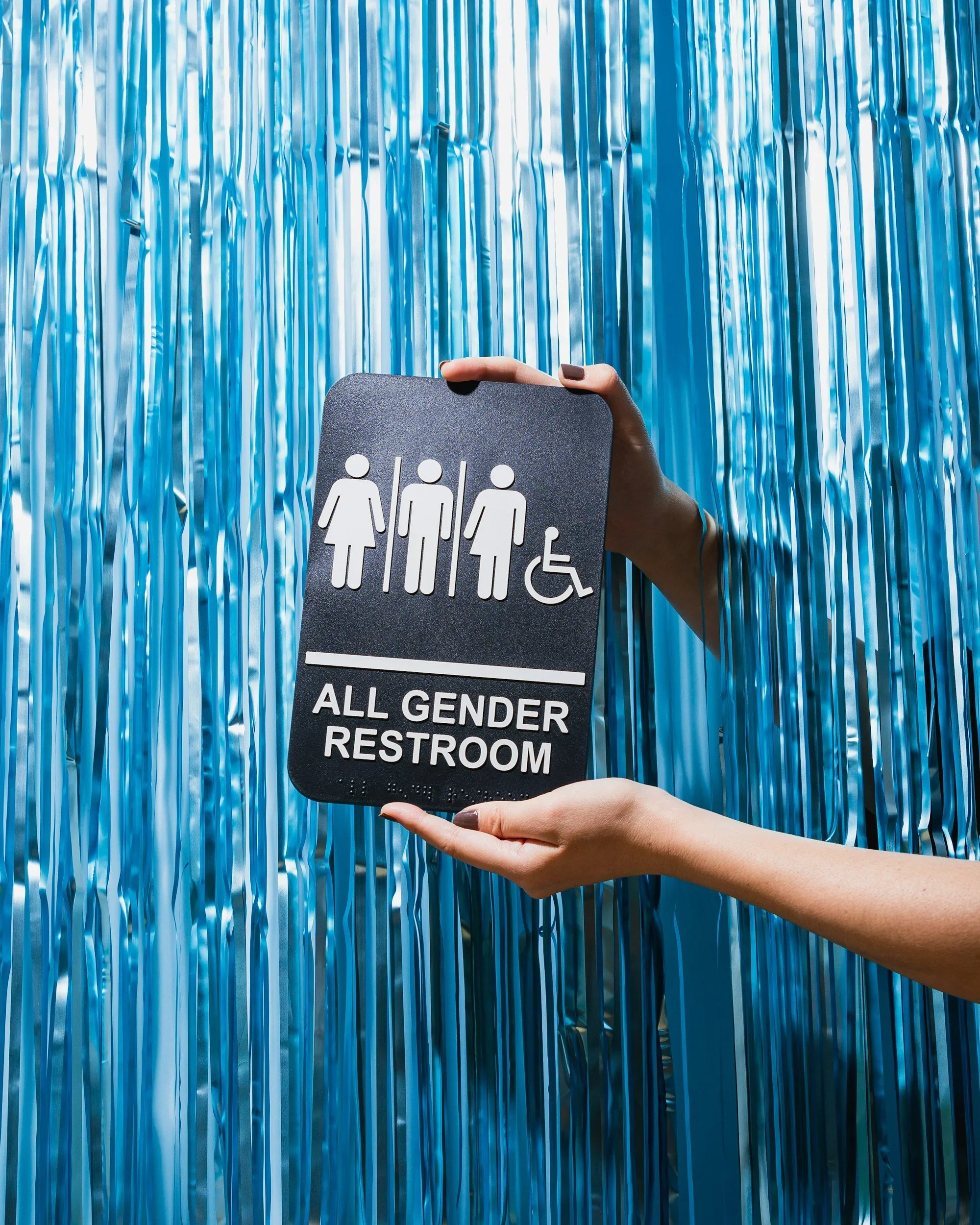The Real Risks in Public Restrooms—And Who Faces Them
Sourced and edited by Jude Goodwin
Trans people have been using public bathrooms for decades without incident. Most people have probably shared a public restroom with a trans person at some point and never realized it. Yet over the last decade, public debate over bathroom access has intensified, with some claiming that allowing trans women to use women’s washrooms puts cisgender women at risk.
This fear has shaped legislation and public policy, especially in the U.S. and the U.K. But what’s behind this fear? And does it hold up under scrutiny?
I’m not an expert on any of this, but I’m curious, and I thought our readers might be as well. What does the data say about risks involved in publish washroom use? Why are people afraid of trans women in women’s washrooms?
Why Are People Afraid?
People who are afraid of trans women in women’s bathrooms are often responding to a mix of misinformation, unfamiliarity, and social or political messaging. Here are some of the key factors:
Misinformation and repetition of myths: Some believe trans women are more likely to commit assault or harassment. However, as Media Matters and others have shown, there is no data to support this.
Media framing: Conservative media frequently link trans rights to threats against children or women. Even isolated incidents involving cis men pretending to be trans are sometimes wrongly used to criticize all trans people.
Political messaging: Some politicians have used bathroom fears as a way to pass restrictive laws. These efforts often rely on hypothetical risks, not actual incidents.
Beliefs about gender: People who believe that sex assigned at birth is the only valid category for male or female may reject trans identities entirely and feel that trans women are “men” entering women’s spaces.
Religious or moral views: Some faith-based communities oppose gender diversity, seeing it as incompatible with their teachings.
Lack of experience: People who have never knowingly met a trans person may be more likely to fear what they don’t understand.
What the Data Actually Shows
There is no evidence that allowing trans women to use women’s bathrooms leads to assaults or safety risks.
Marcie Bianco, writing for Impact (April 2, 2015), reported that spokespeople from the Transgender Law Center, the Human Rights Campaign, and the ACLU all confirmed they had never found a single documented case of a trans woman attacking a cis woman in a bathroom.
A Media Matters study led by Luke Brinker and Carlos Maza surveyed law enforcement officials, sexual assault advocates, and government employees in 12 U.S. states. None of them reported a single case of a trans person harassing or assaulting someone in a restroom.
Ashley Flattery, a victims advocate at the Alachua County Crisis Center, said in the Miami Herald that the idea of trans people being a threat in bathrooms is “imaginary.”
Who Is Actually at Risk?
Transgender and gender-nonconforming people face high rates of harassment and violence in public restrooms. According to the Williams Institute (2013), 70% of trans people surveyed had been denied access, harassed, or assaulted in a restroom.
It’s not just trans women. Many cisgender women who don’t conform to gender norms—such as women with short hair, muscular builds, or masculine clothing—report being questioned or harassed in women’s bathrooms.
How many times have you, or your partner, been anxious about using a public washroom due to past experiences of questioning and/or harassment?
Data from Transequality.org shows that 68% of transgender people have been verbally harassed and 9% physically assaulted while using a public restroom. Eight percent have developed kidney or urinary tract infections from avoiding restrooms due to fear.
UK Legal Changes
This conversation is especially important today as courts around the world continue to reduce the freedom and equity of our trans family.
In late 2023, the UK Supreme Court ruled that under the Equality Act 2010, the terms “man” and “woman” legally refer to biological sex, not gender identity. This decision became a reference point for service providers across the country in 2024 and into 2025.
In response, the Equality and Human Rights Commission (EHRC) issued interim guidance stating that trans women should not be permitted to use women-only facilities—such as public toilets, changing rooms, or other gendered spaces in shops, workplaces, schools, and hospitals. The same applies to trans men, who are biologically female, in men's spaces.
The EHRC emphasized that trans people must still have access to toilet and changing facilities. The guidance recommends that schools and public venues provide “suitable alternatives” such as single-user or all-gender toilets, but it also confirms that service providers can legally exclude trans individuals from sex-specific spaces based on biological sex.
A final Code of Practice, expanding on this interim guidance, is expected from the EHRC in 2025. The policy has been welcomed by some advocacy groups focused on biological sex-based rights, and strongly opposed by LGBTQ+ rights organizations who say it puts trans people at greater risk of exclusion, harassment, and health harms.
(Sources: EHRC Guidance, 2024–2025; The Guardian, January 2024)
So what are Suitable Alternatives?
There are many practical alternatives to bathroom bans that meet everyone’s needs without reinforcing discrimination. We see many of these here in Vancouver, and I feel especially grateful for my home town.
All-gender restrooms: These are often already labeled as “family” restrooms in malls, airports, and public venues. They are typically single-user, locking rooms.
More individual restrooms: Adding individual-use toilets helps not only trans people but also people with disabilities, caregivers, and anyone needing privacy.
Inclusive signage: Clear signs showing where to find all-gender options help people choose the space they feel safest in without forcing confrontation.
These approaches avoid the need to police anyone’s appearance and create safer spaces for everyone, including those who may feel vulnerable in gendered spaces.
Final Thoughts
There is no evidence that trans women pose a danger to women in public bathrooms. However, there is extensive evidence that trans and gender-nonconforming people face serious risks when bathroom access is restricted.
While it’s understandable that some people feel uncertain or uncomfortable—especially when they’ve been exposed to fear-based messaging—it’s important to rely on facts. Solutions like all-gender restrooms offer a way forward that supports safety and dignity for all.
Sources
Marcie Bianco, Impact, "Statistics Show Exactly How Many Times Trans People Have Attacked You in Bathrooms," April 2, 2015. Link
Media Matters, Luke Brinker and Carlos Maza, "Debunking the Bathroom Predator Myth." Link
National Center for Transgender Equality, "FAQs About Bathroom Access and Gender Identity." Link
Williams Institute, UCLA School of Law, "Gendered Restrooms and Minority Stress," 2013. Link
National Transgender Discrimination Survey (NTDS), "Injustice at Every Turn," 2011. Link
Equality and Human Rights Commission (EHRC), UK Guidance (2024). EHRC Website

